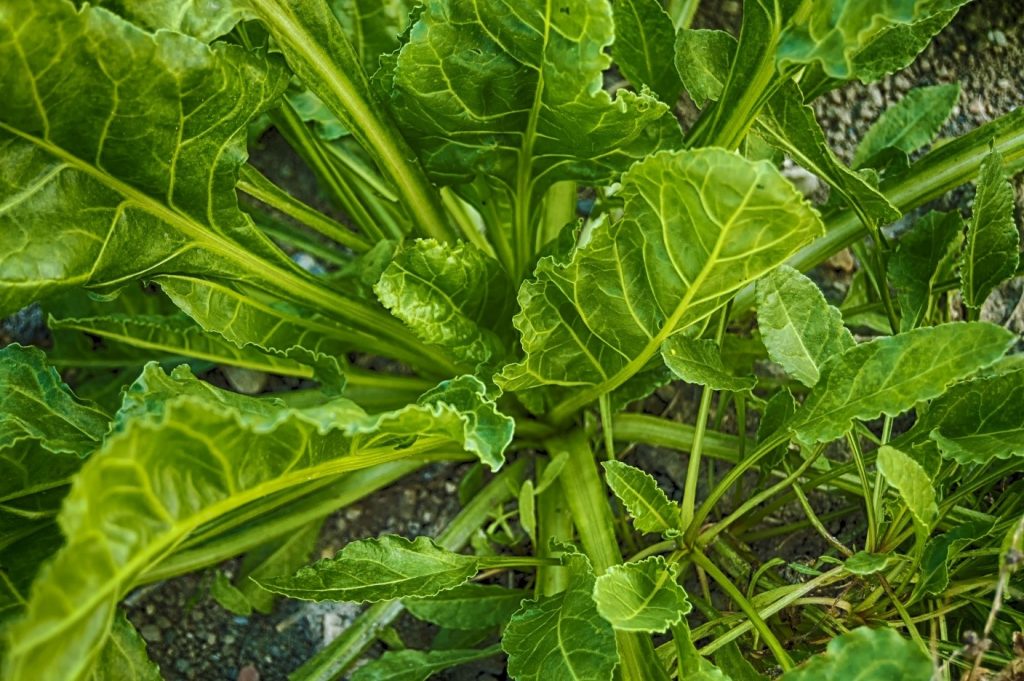Leafy greens are nutritional powerhouses that can be the star of a dish or make up a healthy side. From lettuce to cabbage and kale to spinach, leafy greens include all leaf vegetables that are grown and harvested for fresh market. These versatile and widely available vegetables play an important role in a healthful diet.

Health Benefits of Leafy Greens
As part of a healthy diet, the USDA recommends filling half your plate with fruits and vegetables for every meal and the USDA also recommends varying your vegetable choices. Green leafy vegetables have specific nutrients that make them an excellent choice.
Nutrient-Dense
Green leafy vegetables contain high levels of vitamins A, C, E, and K. Certain greens also provide iron, magnesium, calcium, potassium, and B vitamins. These vitamins and minerals work to keep your whole body functioning optimally.
Low-Calorie
Because green leafy veggies are low-calorie, you can receive their health benefits without significantly increasing your caloric intake. Eating foods like these can help you maintain a healthy body weight.
High Fiber
Fiber is important for overall health and can even help prevent certain chronic diseases. Fiber plays many roles, including:
- Bulking up your stool. Fiber keeps your digestive system healthy and your bowel movements regular.
- Controlling blood sugar levels and decreasing blood cholesterol.
- Helping you feel full. This makes it easier to achieve and maintain a healthy body weight.
Phytonutrients
Phytonutrients (also known as phytochemicals) are compounds found in plants that fulfill a variety of functions, like maintaining vision, boosting the immune system, and reducing disease. Since different types of phytonutrients are found in various vegetables, it is important to eat an assortment of greens for overall health.
Safe Handling of Leafy Greens
Safely handle leafy greens to reduce the risk of foodborne illness.
Purchasing
When buying greens, choose products without damaged or off-color leaves. Make sure the greens were kept refrigerated.
Storing
- Do not wash greens before storing.
- Place the greens in a plastic container lined with paper towels. The paper towels help prevent rotting by soaking up excess moisture, while the container prevents bruising.
- Keep the container in the crisper drawer of the refrigerator. This is the most humid part of the fridge, which keeps the greens from wilting.
Washing
When ready to use, separate and individually rinse the leaves of lettuce and other greens, discarding the outer leaves if torn or bruised. Immersing leaves in a clean bowl of cool water for a few minutes helps loosen attached soil. After rinsing in a bowl or under running water, blot dry with paper towels, or use a salad spinner to remove excess moisture.
Did You Know?
Why are some greens bitter?
The bitter flavor can actually be good for you! It can be a sign that the plant has phytonutrients, which help protect your body from cancer and tumors.
Your body requires some fat to absorb certain phytonutrients. To get the best of these nutrients, put some healthy dressing or cheese on your fresh salad, or cook up your greens with some olive oil!
Don’t like that bitter taste?
The good news is that our likes and dislikes change, depending on what we eat. If you eat these greens often, you will probably learn to enjoy the bitter taste… and get great health benefits, too!
Buying Greens at the Farmers’ Market
Greens grow well in Colorado and are commonly sold at farmers’ markets. Buying greens directly from farmers has several benefits:
- Greens at farmers’ markets are extra fresh. Market greens are usually harvested the day before the market, giving you fresh produce straight from the field with peak flavor and maximum shelf-life.
- You get to know the people who grow your food. Growers can answer questions and share information about their products.
- Buying locally invests in the future of farming, contributes to sustainable food systems, and shows appreciation for the farmers’ hard work.


